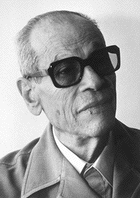| "The cultural
encounter with the West was not a new experience for Egypt nor for the
Arab world. . . .before the flowering of Islamic culture, Egypt had been
exposed to far-reaching influences from the cultures of India, Persia,
Greece and the Mediterranean seaboard, not to mention that of ancient
Egypt. All these encounters with other worlds were rewarding and enriched
our traditional identity and classical culture. They added vigour to our
living organism rather than impoverishing it or inhibiting its
development. . . . We have passed through a number of stages in this
respect, the first of which was the translation of European works into our
language. The second stage was the adaptation of those works and their
integration into our environment, in other words the "Egyptianization"
of an alien cultural product. The third stage is that of maturity, when a
writer's own personality attains its full self-expression.
"The progress made by science and
technology has not always been negative. It has been of immense service to
mankind. Of course there are some destructive aspects, but I think that
this process of dehumanization can be fought with the aid of two great
forces: religion and art. Through these forces it is possible to turn
scientific progress to human advantage. But I insist on the fact that
there is no need to be afraid of scientific progress; science and
technology are capable of correcting their own mistakes. One example can
be seen in current efforts to produce non-pollutant energy. Progress
cannot be stopped, but we must not surrender to panic. I am optimistic
that science, guided by a sense of awareness, can constantly adjust its
trajectory. Art and religion are there to lighten the way."
--Interview 1989
General Discussion Questions
- When Mahfouz' book was published in
serial form in 1959, it created such anger, that Mahfouz agreed to not
publish it in Egypt in book form. In 1989, Omar Abdul-Rahman, the
sheikh who had helped plan the first attack on the World Trade Center,
while in a U.S. prison asserted that if Mahfouz had been punished for Children
of the Alley, then Salman Rushdie would not have had the gal. to
publish his The Satanic Verses. In 1994, one of the followers
of Abdul-Rahman stabbed Mahfouz in the neck, which paralyzed one of
Mahfouz's arms for the reminder of his life. Why do you think his book
creates such fundamentalist rage?
- Should Mahfouz be seen primarily as an
Egyptian writer rather than an Islamic one? Why or why not?
- Likewise, is Mahfouz's work too Western?
Why would his critics see his fiction as co-opted by Western hegemony?
By modernism in general?
- Mahfouz has sometimes said in the past
that his work explores the poles of faith, love, and politics, but
that politics is strangely the most essential. Is Children of the
Alley a political novel? If so, what is its message?
- Would you agree with Mahfouz's thoughts
above about science? Moreover, is his position above reflected in part
five of the novel? Explain.
- Can Mahfouz's Children of the Alley
be read as a post-colonial novel? Why or why not?
Parts IV & V
Parallels with Mohammed
- Childhood as orphan and early life
- Marriage to his first wife, Khadijah
- Early revelations and the Angel Gabriel
- Those who first believe
- Mohammed's view of women
- Other marriages, including Aisha
- Initial hostility
- First martyrs
- Flight to Medina (Hijra)
- Siege at Medina
- Return to Mecca
- Establishment of the Musllm state
- Disagreement after Mohammed's
death
Questions (Qassem)
-
How does Qassem compare
with Islamic beliefs about Mohammed?
-
How does he compare with
Gabal and Rifaa?
-
What is Qassem's message?
-
What does Mahfouz's
overall view of him seem to be?
(Arafa)
-
How does Arafa compare
with the other four key characters who have gone before him?
-
How does he view Gabalawi
at first? Why does he change his mind about him?
-
What is his view of
science (magic)? What motivates his use of it?
-
What does the novel
suggest about science and politics?
-
What about the bomb (the
bottles)?
-
About modernity--work and
leisure, technology. etc.?
-
What is the point of
Gabalawi's death?
-
Is the ending of the novel
ironic?
Structure
The five main characters are
alike in the following ways:
-
Each must leave in order
to return
-
Each encounters Gabalawi,
though each encounter seems less empirically assured than the previous
ones.
-
Each has a message that
the people put their hope in
-
Each is successful only
for a season
-
Each responds to the past
in some fashion
-
Each encounters resistance
Question: What is significant
about this pattern? What does it reveal about the novel's themes and
overall viewpoint? |
